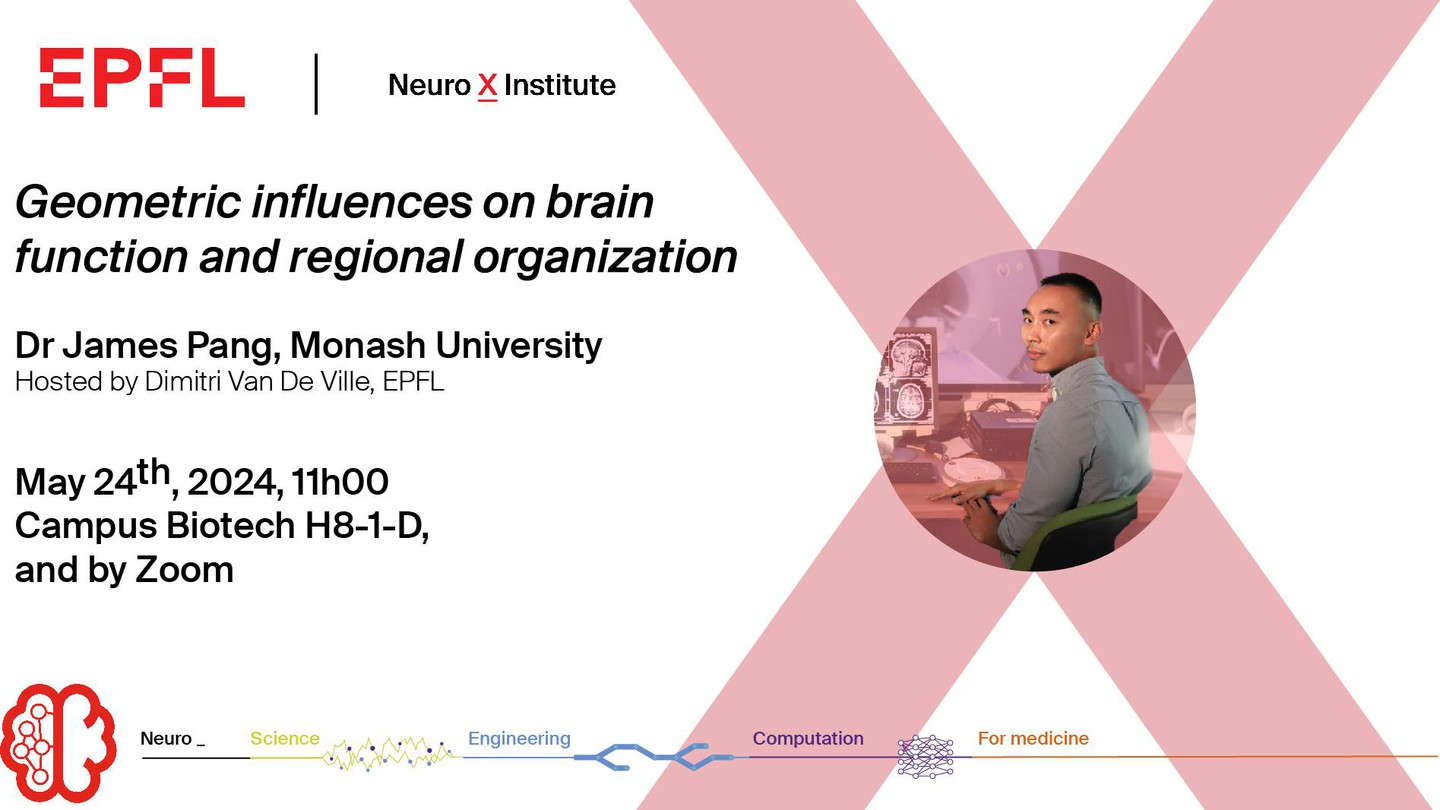Neuro-X seminar: Dr Pang: Geometric influences on brain function and regional organization

Event details
| Date | 24.05.2024 |
| Hour | 11:00 › 12:00 |
| Speaker | Dr James Pang |
| Location | Online |
| Category | Conferences - Seminars |
| Event Language | English |
[Abstract]: In this talk, I will highlight the previously underappreciated role of brain geometry in influencing brain function and regional organization. I will show that geometric eigenmodes derived from the brain's cortical and subcortical geometry accurately capture diverse experimental human functional magnetic resonance imaging (fMRI) data from spontaneous and task-evoked recordings. I will then show that the close link between geometry and function is explained by a dominant role of wave-like activity, and that wave dynamics can reproduce numerous canonical features of functional brain organization. I will also show that geometric eigenmodes can be used to develop a simple, hierarchical approach that mimics a putative generative process for regional organization. The approach can effectively parcellate any brain structure in any species, defining regions with more homogeneous anatomical, functional, cellular, and molecular properties than most existing parcellations in use today. Finally, I will show that the approach captures the essence of reaction-diffusion mechanisms that play an important role in shaping the foundations of regional organization through neurodevelopment.
[Bio]: Dr James Pang is a Research Fellow at the School of Psychological Sciences, Monash University. He obtained his PhD in Physics in 2019 from the University of Sydney, developing new biophysical hemodynamic models for fMRI analysis. He completed his postdoctoral training at QIMR Berghofer Medical Research Institute from 2019-2021, working on macroscale brain network modeling. In 2021, he moved to Monash University to focus on the areas of brain imaging, mapping, and modelling. Overall, his research employs a multidisciplinary approach that combines neuroimaging (structural, diffusion, and functional MRI), biophysical modeling, and connectivity analysis to better understand the mechanisms of brain function in health, disease, and across species. He has co-authored 23 research papers (14 as lead author and 5 as supervisor author) published in popular journals such as Nature, NeuroImage, Human Brain Mapping, eLife, and PLoS Computational Biology, making significant contributions in the field of neuroimaging and computational neuroscience.
Practical information
- Informed public
- Free